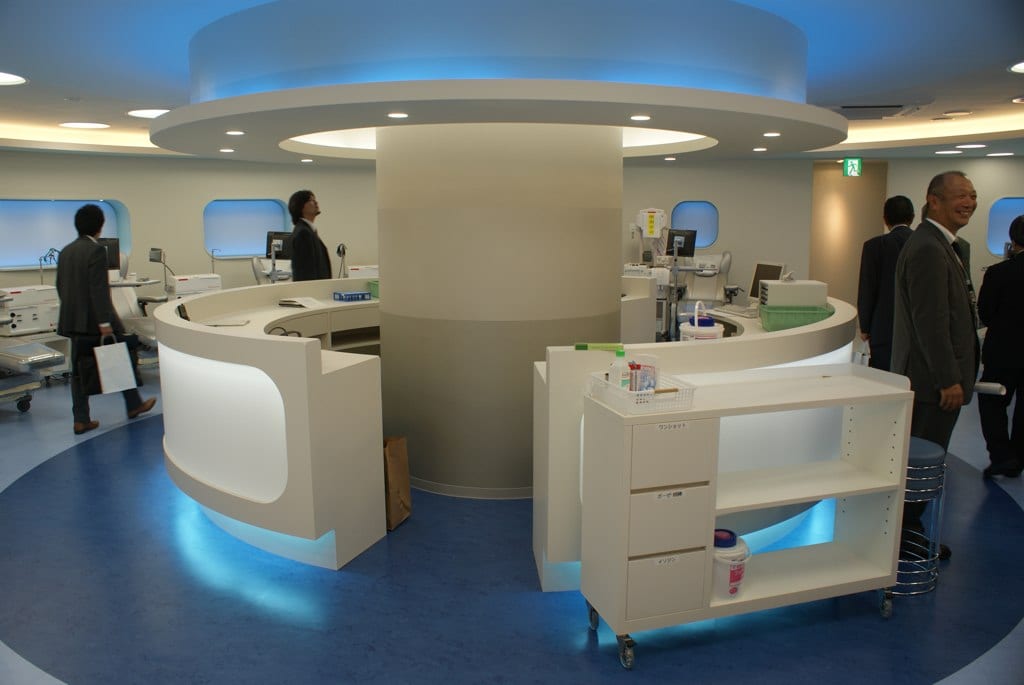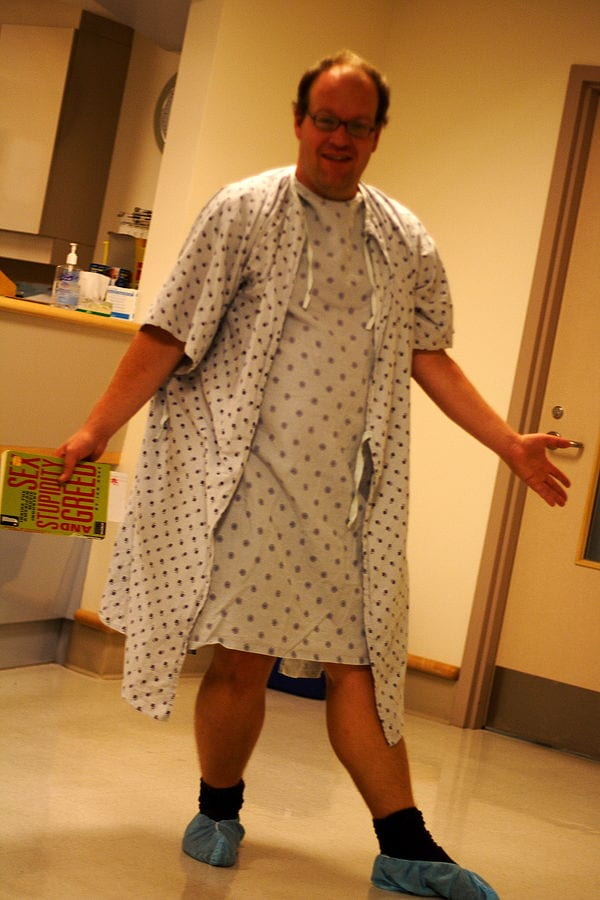
Introducing patient satisfaction initiatives in healthcare: lessons from other industries
Can we use an Uber-style service to combat bed-blocking?
“Many health systems make large investments to improve the patient experience but fail to achieve their desired objectives because they did not understand what really matters most to their patients”, McKinsey analysis
For hospitals and health systems, patient satisfaction is an increasingly important source of competitive advantage. Health systems that want to use patient satisfaction to improve business performance need additional feedback and data to identify the factors that matter most to the patients they serve. Armed with the combined information, the health systems can then determine which investments in improving the patient experience can best help them meet their business objectives. In this article, I will take you through a comprehensive approach that can be used to better understand the patient experience and thereby improve patient satisfaction. This approach is based on the experience of companies in other industries that were able to markedly improve customer satisfaction levels.
Understanding healthcare’s new consumers
The logical first step in designing for the new health consumer is customer journey mapping. This means capturing the full breadth of interactions between healthcare brands and their consumers, from the ease with which they sign-up with a health plan, to the way they relate to in-treatment customer experiences. Based on best-practice mapping work, three key customer needs have been identified that are vital to create an effective “pro-patient” culture. These include:
- designing the customer journey map and touch points based on a customer-centric approach and implementing the strategies and methodology of “customer-outcome” perspective;
- empowering service delivery across all touch points via empowering all resources (PSO model);
- making the service more “personalised” to the patient.
I am going to dig deeper into the two latter concepts and discuss in detail one of the painful “touch points” and discuss why it is painful (not only to the patient but also to the healthcare provider) and review the way this issue has been addressed in different industries.
Customer-centric journey design
This concept should be the “bible” for all healthcare leaders and customer experience experts based on which customer journey maps have to be designed. Applying the strategies and methodologies of a “customer outcome” concept means simply to put ourselves in the patient’s shoes to understand both their expressed and unexpressed needs while designing and implementing the most effective touch points. Any touch point that can be either removed, shortened, automated or combined with a next/or previous touch point has to be put into consideration as long as it delivers the required outcomes for the customer.
Empowering service delivery across all touchpoints
Empowering involves all resources of People (staff), System (automation) and Organisation (offices, queuing, etc.). Empowered (and as previously mentioned, engaged) staff are the first and most powerful reason for improving patient experience. From the reception, meeting the nurses/doctor and ending by collecting the medications by the pharmacist; every single interaction with an engaged and empowered staff member can really leave a good impact on patients. Empowered systems including automated appointment systems, automated check-in, review of results and even ordering and collecting follow-up medications always attract patients – and they even advocate for them. Empowered design of offices, queuing systems and service windows also interact with the patients’ psychology in becoming attached to the place and feeling at ease while either waiting or collecting.
More personalisation of demands
Greater personalisation is something that all health plans and care providers need. Many studies indicate rising demand for user-friendly healthcare portals, where all aspects of the customer journey from plan management and billing to personalized diagnosis tools or access to patient clinical notes could be easily located. There is also greater demand for interactive tools, time saving options like pre-registration forms, menu planning, scheduling tools and the ability to personalize visiting arrangements for family, especially for a patient’s carers and children. The takeaway of this research is greater personalization options go hand-in-hand with reducing customer effort and increasing customer satisfaction.
Lessons from other industries
In other industries, high customer satisfaction levels have been linked with stronger loyalty, sales, and profits. McKinsey research across multiple industries has shown that organisations that routinely achieve high customer satisfaction scores and rely on measurement systems that:
- Link improvements in the customer experience with desired business outcomes (e.g., repeat sales)
- Enable the companies to identify the most important drivers of customer satisfaction and measure ongoing performance in those areas
- Uncover operational insights that enable the frontline staff to make continuous improvements in the customer experience
Analysis of different touchpoints and applying initiatives
One of the main pain points in customer journey is transportation to and from the healthcare provider. DNAs or Did Not Attend means that the patient didn’t attend his/her appointment with no advance warning given or he/she arrived late and could not be seen. A report shared by NHS England in 2012 showed that, of the 92.9 million outpatient appointments booked across NHS in 2012, 80.1% were attended and the remaining 19.9% includes both patient and hospital cancellations as well as DNAs. In UK, failure to attend an appointment costs the NHS approximately £160. Health officials say the NHS loses around £750m a year in outpatient appointments and £162m in GP appointments.
A study of 20,000 NHS patients found that text messages spelling out exactly how much money would be wasted by failure to attend were the best way to reduce missed appointments, however, is there a better way to analyse why patients are really missing their appointments?
There’s a new initiative that’s been implemented in US market. In 2016, Circulation, a start-up using Uber’s technology to facilitate non-emergency medical transportation, has secured an undisclosed seed investment from Flare Capital. In September 2016, the start-up, whose founding team includes Boston Children’s Hospital CIO John Brownstein, announced its partnership with Uber as the ridesharing company’s “preferred healthcare partner.” Brownstein introduced the service saying: “Why can’t Uber be that ‘Uber for health’ around the specific area of medical transportation? We know that $6 billion is spent annually on healthcare transportation. We have a massive number of no-shows (DNAs) and transportation plays a critical role. And when you look specifically at clinical trials, we have major issues with dropouts and we know some of those are just about logistics, just about getting to those trial sites.”
Circulation offers a dedicated mode of transport for patients attending their appointments using cars that are different from the regular Uber fleet. The service is offered to patients who do not have their own transport. Circulation is connected directly to the hospitals’ systems (EPR – Electronic Patient Records) enabling the relevant appointments to be identified and the service offered to those patients in need of transport.
Unblocking
In the same context, a ‘delayed transfer of care’ occurs when a patient is ready to leave a hospital or similar care provider but is still occupying a bed. Delays can occur when patients are being discharged home or to a supported care facility, such as a residential or nursing home, or are awaiting transfer to a community hospital or hospice.
Delayed transfers – also referred to as ”DTOCs” or sometimes, often in the media, described as ”bed-blocking” – can cause considerable distress and unnecessarily long stays in hospital for patients. They also affect waiting times for NHS care, as delayed transfers reduce the number of beds available for other patients. Here we look at how delayed transfers of care are measured, why they occur, and what impact they have.
Each month NHS England publishes two measures of delayed transfers.
- The total number of bed days taken up by all delayed patients across the whole calendar month. For example, in October 2017 there were 170,100 total delayed days.
- The average daily number of delayed transfers across the month. Referred to as ‘delayed transfer of care beds’, this measure is calculated by dividing the number of delayed days during the month by the number of calendar days in the month. For example, in October 2017 the 170,100 total delayed days, divided by 31, gives a daily ‘delayed transfer of care beds’ figure of 5,487. This measure replaces previous data (collected until the end of March 2017) on the number of patients still delayed at midnight on the last Thursday of the month.
It has been observed in healthcare providers (esp. in NHS) that “bed blocking” is largely related to unavailability or delay in transfer to the final destination (whether it’s a home, a hospice or a community house). When it comes to home, some hospitals are delayed in discharging their patients (esp. if elderly) due to the fact that there is no feasible transportation mode. This leads to the bed blocking phenomenon and results in a delay in evacuating the beds. Use of a Circulation-style service could go some way to alleviating this problem.
Way forward
Healthcare industries need to understand and analyse the “real” customer journey and touch points and critically introduce and empower the initiatives and solutions that have proved successful in different industries. This is a practical way of improving patient experience and reflects the overall success of the healthcare provider as an organisation.
In the meantime, I would be glad if you could share with me your previous experiences, thoughts and ideas on how healthcare providers can improve and empower the “transportation” aspect for patients and/or families.
About Author:
Haytham Soliman is a GMC registered orthopaedics surgeon with more than 10 years of clinical experience, trained in Orthopaedics Surgery with special interest in Sports Medicine. He is an advocate of applying quality control measures, evidence-based medicine and updated clinical research in his practice. He also has 8 years’ business and managerial experience with Bupa Arabia as a Customer Experience Excellence Leader. His expertise includes project management, cost containment strategies, strategic partners’ relations and customer experience excellence protocols. An ex-professional athlete, he has a passion for sports and is currently participating in amateur level triathlon competitions.
About Author:
Haytham Soliman is a GMC registered orthopaedics surgeon with more than 10 years of clinical experience, trained in Orthopaedics Surgery with special interest in Sports Medicine. He is an advocate of applying quality control measures, evidence-based medicine and updated clinical research in his practice. He also has 8 years’ business and managerial experience with Bupa Arabia as a Customer Experience Excellence Leader. His expertise includes project management, cost containment strategies, strategic partners’ relations and customer experience excellence protocols. An ex-professional athlete, he has a passion for sports and is currently participating in amateur level triathlon competitions.





